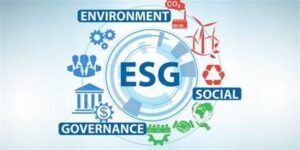
Last week, the U.S. General Services Administration (GSA) issued its largest ever notice of opportunity under its “National Deep Energy Retrofit” program, announcing their intent to leverage funding from the Inflation Reduction Act for projects in four (4) states and the District of Columbia. The projects are intended to accelerate the agency’s efforts to achieve President Biden’s goal to achieve net-zero emissions in the federal buildings portfolio by 2045, and are part of his “Investing In America” agenda to attempt to rebuild the economy, create good-paying jobs, and accelerate the deployment of clean energy.
Through “Energy Savings Performance Contracts (ESPCs)”, the GSA stated that it intends to use Inflation Reduction Act funding to bring energy and cost-saving improvements to 41 facilities, including 17 in the DC area and 24 across Illinois, Indiana, Minnesota, and Wisconsin. The projects, with an estimated value of more than $300 million, are looking to convert facilities to all-electric, rather than relying on onsite fossil fuels equipment, and promote opportunities to achieve net zero operations.
According to the GSA, “this historic call for proposals is another example of how GSA is making meaningful progress towards decarbonization and net zero buildings – while delivering savings to taxpayers and a healthier future for the next generation,” said GSA Administrator Robin Carnahan. “We’re excited to partner with innovative energy service companies to rapidly accelerate our progress toward achieving a net zero federal footprint – and create good-paying jobs along the way.”
As part of the White House’s Climate Smart Buildings Initiative, GSA’s National Deep Energy Retrofit program in intended to help modernize federal buildings to cut greenhouse gas emissions and reduce site energy consumption by renovating buildings to maximize reductions in onsite energy use. These projects will also help support GSA’s efforts to meet the recently released “Federal Building Performance Standard” and convert buildings to all-electric buildings in which none of the equipment will use onsite fossil fuel combustion.
Per the GSA, GSA provides centralized procurement and shared services for the federal government, managing a nationwide real estate portfolio of nearly 370 million rentable square feet, overseeing approximately $75 billion in annual contracts, and delivering technology services that serve millions of people across dozens of federal agencies.
Take Aways – it appears pretty clear that the Biden Administration is moving to solidify its positions regarding climate change and action to reduce green house gas emissions by having the GSA push forward with their National Deep Energy Retrofit Program. This is a furthering of the Administration’s prior climate comments and commitments regarding greenhouse gas reduction and doing what it views as being within its preview without having to obtain Congressional approval or authorization. Given the GSA’s broad impact on its own portfolio and on landlords where it leases space, this will indeed cause more than a ripple and is likely to significantly affect much of its inventory of hundreds of millions of square feet of space nationally.
Duane Morris has an active ESG and Sustainability Team to help organizations and individuals plan, respond to, and execute on your Sustainability and ESG planning and initiatives. For more information or if you have any questions about this post, please contact Brad A. Molotsky, David Amerikaner, Sheila Rafferty-Wiggins, Alice Shanahan, Jeff Hamera, Nanette Heide, Joel Ephross, Jolie-Anne Ansley, Robert Montejo, Seth Cooley, or the attorney in the firm with whom you are regularly in contact.
